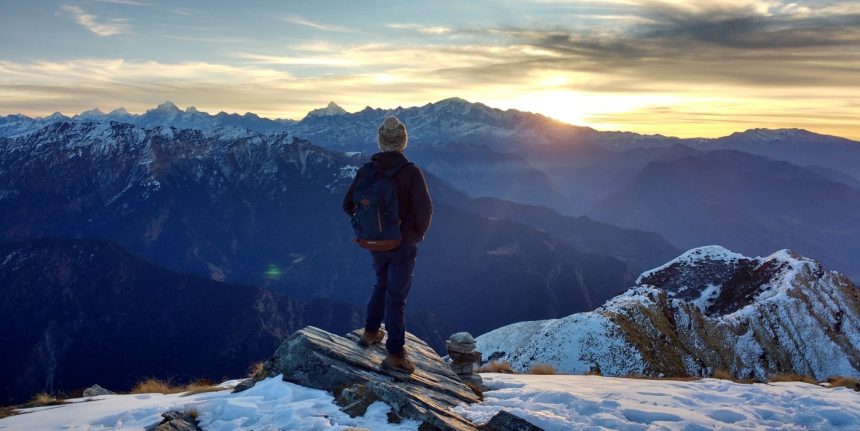Kashmir, often referred to as “Paradise on Earth,” has long been a sought-after destination for travellers mesmerized by its breath-taking landscapes, snow-clad mountains, and pristine valleys. Tourism has been a major pillar of the region’s economy, providing employment and livelihood opportunities to thousands. However, over the years, political instability, environmental concerns, and shifting travel preferences have posed challenges to the traditional tourism sector. In response, alternative forms of tourism, such as homestays and adventure tourism, have emerged as potential game-changers, offering sustainable economic opportunities while preserving the region’s cultural and environmental heritage.
The concept of homestays has gained significant traction in recent years, driven by travelers’ desire for authentic cultural experiences. Unlike commercial hotels, homestays offer visitors a chance to live with local families, immersing themselves in the traditions, cuisine, and lifestyle of Kashmiris. This model of tourism not only enhances the visitor’s experience but also provides direct financial benefits to local families. With the growing influx of tourists seeking personalized and offbeat experiences, homestays have enabled many Kashmiris to become micro-entrepreneurs, leveraging their homes as sources of income. From quaint wooden houses in Gurez to charming residences in Pahalgam and Gulmarg, the homestay culture is gradually reshaping the hospitality landscape in Kashmir.
One of the most significant economic advantages of homestays is their ability to distribute the financial benefits of tourism more equitably. Unlike large hotels, which are often owned by big business groups, homestays empower local communities by allowing them to earn directly from tourism. The revenue generated from these stays helps in improving household income, funding children’s education, and supporting local markets. Many women in rural Kashmir have found financial independence through homestays, as they actively manage bookings, prepare traditional meals for guests, and showcase Kashmiri handicrafts. This grassroots-level economic participation fosters self-reliance and strengthens local economies, reducing dependence on seasonal tourism employment.
In addition to their economic impact, homestays play a crucial role in promoting sustainable tourism. Large hotels and resorts often lead to environmental degradation through excessive water consumption, waste generation, and deforestation. Homestays, on the other hand, operate within existing structures, minimizing the ecological footprint of tourism. Many homestay owners have embraced eco-friendly practices such as solar energy usage, waste management, and organic farming, aligning with global trends of responsible tourism. This not only preserves Kashmir’s fragile ecosystem but also enhances its appeal to environmentally conscious travelers.
Alongside homestays, adventure tourism has emerged as a major driver of economic revival in Kashmir. With its diverse topography, the region offers unparalleled opportunities for adventure enthusiasts, ranging from trekking and mountaineering to skiing, white-water rafting, and paragliding. In recent years, adventure tourism has gained momentum, attracting thrill-seekers from across India and beyond, eager to explore Kashmir’s rugged landscapes and unspoiled trails.
Trekking has been one of the most popular adventure activities, with trails like the Great Lakes Trek, Tarsar Marsar Trek, and Kolahoi Glacier Trek offering mesmerizing views of alpine meadows, glacial lakes, and snow-capped peaks. These treks not only bring revenue to local guides and porters but also support ancillary businesses such as transport services, equipment rentals, and food supplies. Unlike conventional tourism, which is often limited to urban centers like Srinagar and Gulmarg, adventure tourism extends the benefits to remote villages, boosting rural economies and creating livelihood opportunities in offbeat destinations.
Similarly, skiing in Gulmarg has placed Kashmir on the global map as a premier winter sports destination. Every year, thousands of tourists, including international skiers, visit Gulmarg to experience its powdery snow and challenging slopes. The rise in winter tourism has led to the growth of local ski schools, equipment rental businesses, and hospitality services, providing employment to hundreds of youth. Moreover, the government’s focus on promoting Gulmarg as an international skiing destination has encouraged investment in infrastructure, further strengthening the economic prospects of adventure tourism.
White-water rafting in Pahalgam and Sonamarg has also gained popularity, drawing adventure enthusiasts who seek an adrenaline rush in Kashmir’s gushing rivers. The Lidder and Sindh rivers provide excellent rafting opportunities, and the growth of this sector has benefitted local boat operators, guides, and small businesses catering to tourists. Similarly, paragliding in areas like Astanmarg and Sanasar has added a new dimension to adventure tourism, attracting those who wish to experience Kashmir from a breathtaking aerial perspective.
One of the most promising aspects of adventure tourism is its potential to provide year-round employment. Unlike traditional tourism, which is often seasonal and dependent on summer and autumn visitors, adventure tourism extends across all seasons. Summer treks, rafting, and paragliding thrive in the warmer months, while winter sports such as skiing and snowboarding create demand during colder months. This diversification helps stabilize incomes and reduces the vulnerability of those reliant on seasonal tourism.
Additionally, adventure tourism has opened up opportunities for local youth who are skilled in outdoor activities. Many young Kashmiris have been trained as trekking guides, ski instructors, and adventure sports facilitators, enabling them to earn sustainable livelihoods without having to migrate in search of jobs. The adventure tourism sector has also encouraged the formation of small businesses specializing in gear rental, guided tours, and eco-tourism initiatives, further strengthening local entrepreneurship.
Despite its immense potential, the expansion of homestays and adventure tourism in Kashmir comes with challenges. One of the major hurdles is infrastructure development. Many remote areas that are ideal for adventure tourism lack proper road connectivity, reliable internet access, and essential services. Poor infrastructure not only deters potential tourists but also hampers the ability of local businesses to operate efficiently. Addressing these gaps through government and private sector investment is crucial for unlocking the full potential of alternative tourism in Kashmir.
Regulatory issues also pose challenges, especially for homestay owners. Many struggle with obtaining necessary permits and complying with evolving tourism policies. A streamlined regulatory framework that supports small-scale tourism entrepreneurs can enhance the ease of doing business and encourage more people to participate in the sector. Similarly, training and certification programs for adventure tourism professionals can ensure safety standards and enhance the credibility of Kashmir as a top adventure tourism destination.
Marketing and promotion are equally vital. While mainstream destinations like Gulmarg and Pahalgam receive attention, lesser-known areas offering unique adventure experiences often remain unnoticed. A targeted promotional strategy, leveraging digital platforms and social media, can boost visibility and attract a broader audience. Collaborations with travel influencers, adventure sports communities, and eco-tourism networks can further enhance Kashmir’s global appeal as a premier destination for alternative tourism.
The integration of homestays and adventure tourism into Kashmir’s broader economic strategy can have far-reaching benefits. By diversifying the tourism sector beyond conventional sightseeing, these initiatives create inclusive economic opportunities, empower local communities, and reduce pressure on urban centers. Sustainable tourism models that prioritize cultural preservation and environmental responsibility will not only safeguard Kashmir’s natural beauty but also ensure long-term economic resilience.
Ultimately, the rise of homestays and adventure tourism represents a paradigm shift in how Kashmir approaches tourism. Instead of relying solely on large-scale infrastructure projects and mass tourism, the focus is gradually shifting towards community-driven initiatives that celebrate Kashmir’s rich heritage and natural wonders. If nurtured and supported effectively, these alternative tourism models can play a pivotal role in Kashmir’s economic revival, providing hope and prosperity to countless families across the valley.
(The Author is RK Columnist and can be reached at: [email protected], @sanjay pandita)










